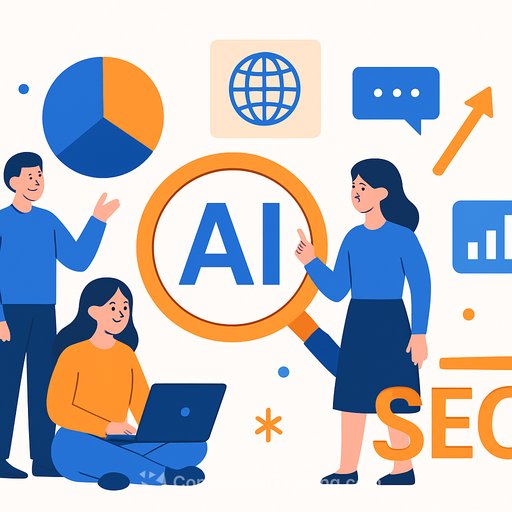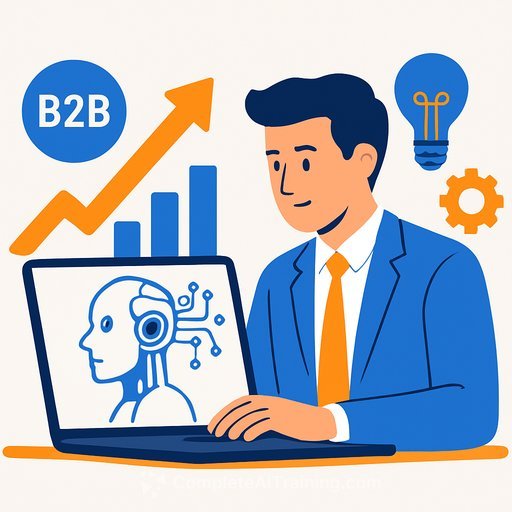How top marketers are using AI right now (and what to do next)
Some leaders warn AI can undercut teams and business models. Others are seeing it speed up real work and spark new marketing plays. Both can be true, depending on how you use it.
At the Most Powerful Women Summit, marketing leaders shared how they're reaching new customers without drifting from brand purpose. The throughline: AI helps you move faster, personalize smarter, and meet younger audiences where they already spend time-without losing the human element that builds trust.
Shift the mindset inside your team
Fear of job loss still hangs over AI. As one executive put it, you need your teams to not just accept AI, but actually understand it. Skills compound, and the skill that compounds fastest right now is learning how to work with AI-and relearning it as it changes. The rule of thumb: "Forget what you know-learn this. And in a year, learn again."
- Run short, weekly AI practice sessions. Make prompt writing, QA, and brand voice tuning a shared muscle.
- Show, don't tell. Demonstrate time saved on real tasks your team does every week.
- Set expectations: AI drafts, humans decide. Quality is the goal; speed is the unlock.
Meet younger customers where they are
One insurer is testing campaigns on Twitch to attract younger segments. It's data-led and channel-native, not copy-paste from legacy media. The lesson for marketers: pick one youth-heavy channel, study its culture, then ship small creative bets and measure fast.
- Map audience-platform fit. Don't overextend-go deep on one channel first.
- Blend AI insights with creator instincts. Let data shape the brief, let humans shape the story.
Personalization that still feels human
GoFundMe is using Sierra AI to help users start fundraisers-especially with headlines, where many people get stuck. AI reduces the friction to publish, while the story still comes from the person asking for help. That preserves the credibility and dignity that make others want to give.
- Use AI to remove friction points (subject lines, headlines, summaries), then keep the human voice intact.
- Train models on approved voice examples so suggestions align with your brand's tone and values.
Ship faster, but keep taste and standards
AI can take you to a "B-minus" quickly-sometimes an "F." Your job is to get it to an "A." That means clear briefs, tight review loops, and a plan for what AI should never publish on its own.
- Create a brand-safe prompt library with do/don't rules and reference snippets.
- Set up a human-in-the-loop workflow: draft with AI, review with expert, run a final brand/claims check.
- A/B test AI variants, but gate any ad or email with compliance, legal, and accessibility checks.
Beyond digital: AI in stores and service
Whole Foods is using AI to raise the bar on customer service across the store. Teams are building friendlier interfaces, faster product discovery, and smarter baskets that help shoppers find what they need, get ideas, and save money. The point isn't novelty-it's a better trip and a better cart.
- Product discovery: semantic search, recipe-to-basket, and dietary filters that actually understand intent.
- Basket building: auto-suggest complements, budget-aware swaps, and price/pack-size prompts.
- Service: guided help for associates, faster answers for customers, and fewer dead ends.
A simple playbook you can run this quarter
- Pick two use cases with measurable upside: ad variants and email subject lines, or on-site search and product recommendations.
- Define guardrails: voice guide, claims policy, data rules, and "never publish without review" areas.
- Build your stack: one LLM interface, one experimentation tool, one analytics source of truth.
- Pilot on a small segment. Track speed-to-ship, lift in CTR/CVR, AOV, CSAT-whatever ties to revenue or retention.
- Train the team. Teach prompt patterns, red-team reviews, and how to spot AI errors fast.
- Share wins and misses weekly. Keep the cycle short; keep learning visible.
Keep trust front and center
Personalization without permission erodes trust. Be clear about data use, get consent, and avoid uncanny experiences that feel intrusive. AI should help people make better decisions, not pressure them into ones they don't want.
What this means for marketers
- AI is a force multiplier for speed and personalization, but only if your people know how to use it.
- Human judgment is non-negotiable. Protect the brand with smart guardrails and editorial taste.
- Focus on real customer value: faster answers, clearer choices, and easier paths to purchase.
Next steps
- Audit your funnel for slow spots where AI can remove friction in days, not months.
- Stand up a cross-functional task force (marketing, CX, legal, data) to approve your first playbook.
- Upskill the team with practical, marketing-specific training. See the AI Certification for Marketing Specialists for a structured path.
The takeaway: use AI to do more of what customers actually want-clarity, speed, and relevance-while your team supplies the judgment, taste, and brand story that AI can't.
Your membership also unlocks:






